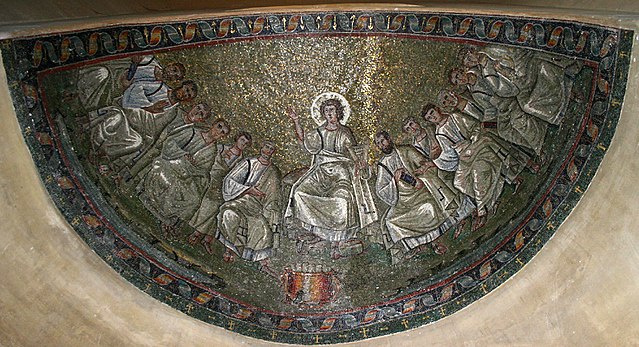Christ in Majesty or Christ in Glory is the Western Christian image of Christ seated on a throne as ruler of the world, always seen frontally in the centre of the composition, and often flanked by other sacred figures, whose membership changes over time and according to the context. The image develops from Early Christian art, as a depiction of the Heavenly throne as described in 1 Enoch, Daniel 7, and The Apocalypse of John. In the Byzantine world, the image developed slightly differently into the half-length Christ Pantocrator, "Christ, Ruler of All", a usually unaccompanied figure, and the Deesis, where a full-length enthroned Christ is entreated by Mary and St. John the Baptist, and often other figures. In the West, the evolving composition remains very consistent within each period until the Renaissance, and then remains important until the end of the Baroque, in which the image is ordinarily transported to the sky.

The Andronikov Gospels were made in the Andronikov Monastery, Moscow in the early 15th century
Christ in majesty in a mandorla, surrounded by emblems of the evangelists: ivory plaques on a wooden coffret, Cologne, first half of the 13th century (Musée de Cluny)
Traditio legis, or "transmission of the law", Christ as lawgiver, mosaic, Basilica of San Lorenzo, Milan, 4th century, includes a scroll box at Christ's feet.
The Deesis mosaic in the Hagia Sophia in Constantinople
Early Christian art and architecture
Early Christian art and architecture is the art produced by Christians, or under Christian patronage, from the earliest period of Christianity to, depending on the definition, sometime between 260 and 525. In practice, identifiably Christian art only survives from the 2nd century onwards. After 550, Christian art is classified as Byzantine, or according to region.
Jesus healing the bleeding woman, Roman catacombs, 300–350
The Brescia Casket, 4th-century ivory
Good Shepherd from the Catacomb of Priscilla, 250–300
Noah praying in the Ark, from a Roman catacomb








